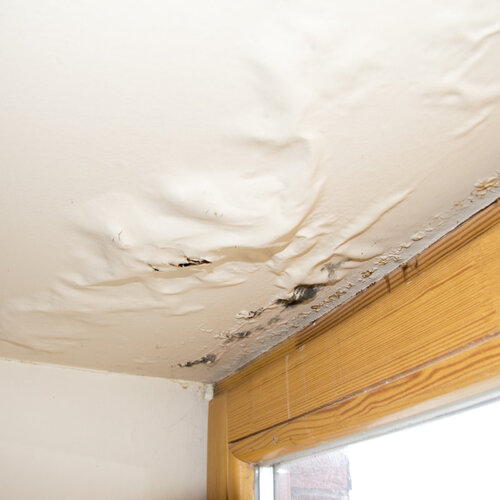Unveiling Common Triggers Behind Residential Water Leak Concerns
Unveiling Common Triggers Behind Residential Water Leak Concerns
Blog Article
We have encountered this great article on Common Water Leaks In House directly below on the internet and figured it made sense to write about it with you on this site.

Leakages not only trigger waste of water but can also trigger unneeded damages to your residence and advertise undesirable natural development. By understanding as well as looking for daily scenarios that trigger leaks, you can safeguard your home from future leaks and also unnecessary damages.
Elbowing in roots
Many water leakages begin outside your home rather than inside it. If you observe an abrupt reduction in water stress, claim in your tap, require time to head out and also examine your backyard. You could see damp spots or sinkholes in your backyard, which may imply that tree origins are getting into water lines triggering water to permeate out. You can have your plumber look for intrusion, especially if you have trees or shrubs near your residential property.
Rusty water supply
This might be the cause of discoloration or warping on your water pipes. If our plumbing system is old, think about replacing the pipelines since they are at a higher danger of deterioration than the more recent versions.
Malfunctioning Pipeline Joints
The factor at which your pipelines attach is regularly the weakest web link in the waterline. Pipe joints can deteriorate over time, leading to water leaks. Regrettably, most of pipe joints are not conveniently visible. If you have noisy pipes that make ticking or banging noises, specifically when the hot water is activated, your pipe joints are probably under a lot of stress. It is recommended to have your plumber inspect your system annually.
Instantaneous temperature level modifications.
Severe temperature modifications in our pipes can create them to expand as well as acquire unexpectedly. This development as well as tightening may create fractures in the pipes, specifically if the temperature are below freezing. It would certainly be best if you watched on exactly how your plumbing functions. The existence of the formerly discussed scenarios frequently indicates a high threat.
Poor Water Connectors
At times, a leak can be brought on by loosened hose pipes as well as pipelines that supply your devices. Typically, moving is what triggers the loose water Links. You might discover when it comes to a washing device, a hose might spring a leak as a result of trembling during the spin cycle. In case of a water links leakage, you might observe water running straight from the supply line or puddles around your devices.
Clogged Drains
Clogged drains pipes might be irritating and also inconveniencing, but they can often wind up causing an overflow leading to break pipes. Maintain eliminating any kind of products that may decrease your drains pipes that might clog them to avoid such aggravations.
All the above are reasons for leakages yet not all water leaks result from plumbing leakages; some leakages could come from roofing system leakages. All leakages should be repaired promptly to prevent water damage.
Leakages not just create waste of water but can additionally trigger unnecessary damage to your house and also advertise undesirable natural development. By understanding as well as looking for everyday situations that create leakages, you can safeguard your home from future leakages and unnecessary damages. Today, we will look at 6 leakage triggers that may be creating your pipes to drip.
At times, a leak can be caused by loose hoses as well as pipes that supply your devices. In situation of a water connections leakage, you might observe water running directly from the supply line or pools around your appliances.
How To Check For Water Leak In Your Home
How To Check for Leaks
The average household's leaks can account for nearly 10,000 gallons of water wasted every year and ten percent of homes have leaks that waste 90 gallons or more per day. Common types of leaks found in the home are worn toilet flappers, dripping faucets, and other leaking valves. These types of leaks are often easy to fix, requiring only a few tools and hardware that can pay for themselves in water savings. Fixing easily corrected household water leaks can save homeowners about 10 percent on their water bills.
To check for leaks in your home, you first need to determine whether you're wasting water and then identify the source of the leak. Here are some tips for finding leaks:
Take a look at your water usage during a colder month, such as January or February. If a family of four exceeds 12,000 gallons per month, there are serious leaks.
Check your water meter before and after a two-hour period when no water is being used. If the meter changes at all, you probably have a leak.
Identify toilet leaks by placing a drop of food coloring in the toilet tank. If any color shows up in the bowl after 10 minutes, you have a leak. (Be sure to flush immediately after the experiment to avoid staining the tank.)
Examine faucet gaskets and pipe fittings for any water on the outside of the pipe to check for surface leaks.
Undetected water leaks can happen without the home or business owner even realizing. If you suspect a water leak, but not able to find the source. It is time to contact a professional water leak detection service, The Leak Doctor.
How To Find a Water Leak In Your Home
https://www.leakdoctor.com/blog/How-To-Check-For-Water-Leak-In-Your-Home_AE197.html

As a devoted person who reads on Most Common Causes of Leaky Pipes, I think sharing that excerpt was worth the trouble. Enjoyed reading our entry? Please share it. Help someone else find it. Bless you for your time. Come back soon.
Secure, fast, dial! Report this page